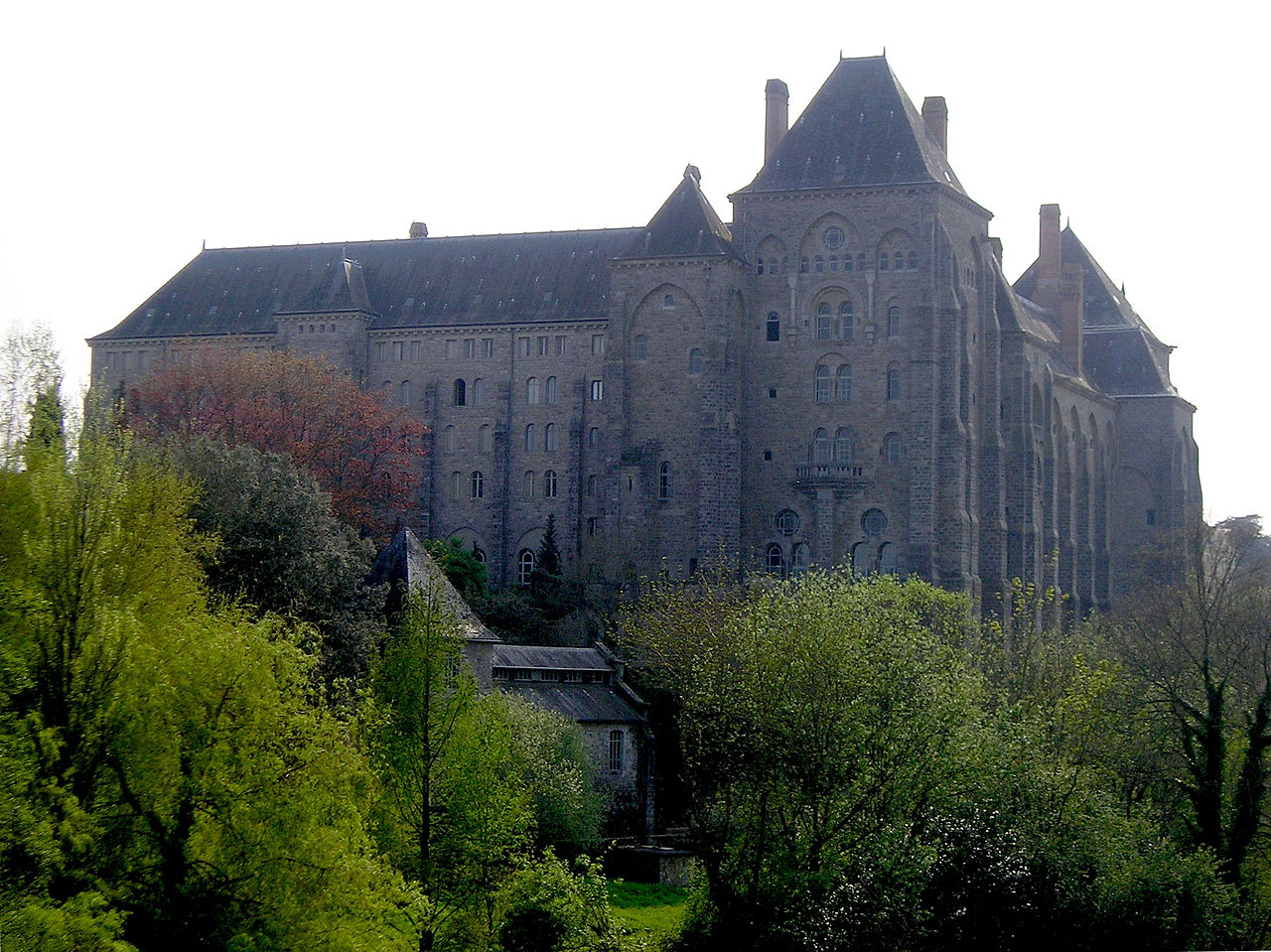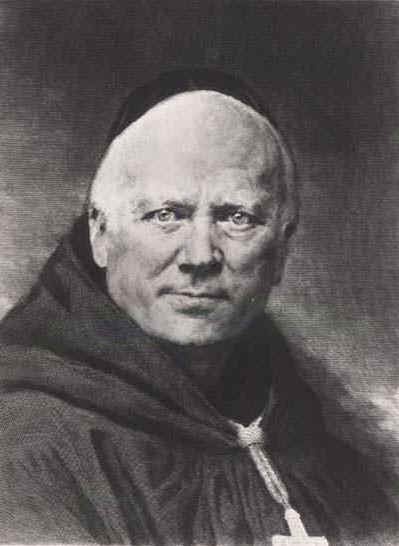
Date: 28 July 2005 (according to Exif data).
Source: Own work.
Author: User:Bautsch.
(Wikimedia Commons)
Solemnes Abbey.
Available on YouTube at
It was originally founded in 1010 as a Priory of the Benedictine Le Mans Abbey. Its history was largely uneventful. It suffered considerably during The Hundred Years' War but was afterwards restored.
Solesmes Abbey
Gregorian Chant.
Available on YouTube at

English: Solesmes Abbey, France.
Français: Vue de l'abbaye depuis le pont franchissant la Sarthe.
Date: 14 April 2007 (according to Exif data).
Source: No machine readable source provided.
Own work assumed (based on copyright claims).
Author: No machine readable author provided.
Leag assumed (based on copyright claims).
(Wikimedia Commons)
Solesmes, whose occupants had been forced out in March 1791, was then commandeered as the country residence of a certain Henri Lenoir Chantelou, and its archives were burned in a "civic" bonfire on 14 July 1794. The Church was re-opened at the time of the Concordat and the Lenoir de Chantelou family were given statues by Napoleon, so that those at Le Mans Abbey were not removed.
In 1825, government property administrators sold the Monastic buildings and 145 acres with its farms. In 1832, it was decided to demolish the buildings, starting with the East Wing, which has now disappeared.
In 1825, government property administrators sold the Monastic buildings and 145 acres with its farms. In 1832, it was decided to demolish the buildings, starting with the East Wing, which has now disappeared.

English: Solesmes Abbey, France,
Français: Vue de l'abbaye depuis le chemin situé au pied des remparts.
Date: 14 April 2007 (according to Exif data).
Source: No machine readable source provided.
Own work assumed (based on copyright claims).
Author: No machine readable author provided.
Leag assumed (based on copyright claims).
(Wikimedia Commons)
In 1866, a Convent, Saint Cecilia's Abbey, Solesmes, was also Founded at Solesmes, by Mother Cécile Bruyère (the first Abbess), with the support of Dom Guéranger, which was the first House of the Nuns of The Solesmes Congregation.

English: Coat-of-Arms of Dom Guéranger, first Abbot of Solesmes Abbey.
Français: Armoiries de Dom Guéranger, abbé de Solesmes.
Source: Own work, some elements by SajoR
in "Armorial des prélats Français du XIXème siècle" p. 309.
Author: Mathieu CHAINE.
(Wikimedia Commons)
As part of its mission of Monastic revival, the Abbey has been the Mother House of numerous other Monastic Foundations, most notably in recent years the Monastery at Palendriai, in Lithuania.
The Abbey is noted for its crucial contribution to the advancement of The Roman Catholic Liturgy and the revival of Gregorian Chant. A documentary film on life at Solesmes was made in 2009 and focuses on the Tradition of the Chant at the Monastery.

Image of Prosper Guéranger (1805–1875).
Printmaker was Claude-Ferdinand Gaillard (1834–1887).
Created 1874, published 1878 or earlier.
Date: 7 May 2007 (original upload date).
Source: Transferred from en.wikipedia to Commons.
Author: The original uploader was Ikanreed at English Wikipedia.
(Wikimedia Commons)
The Liturgical Year.
Written by Dom
Available (in U.K.) from
Available (in U.S.A.) from

THE SAINT ANDREW DAILY MISSAL
THE SAINT ANDREW DAILY MISSAL
Available (in U.K.) from
Available (in U.S.A.) from

No comments:
Post a Comment